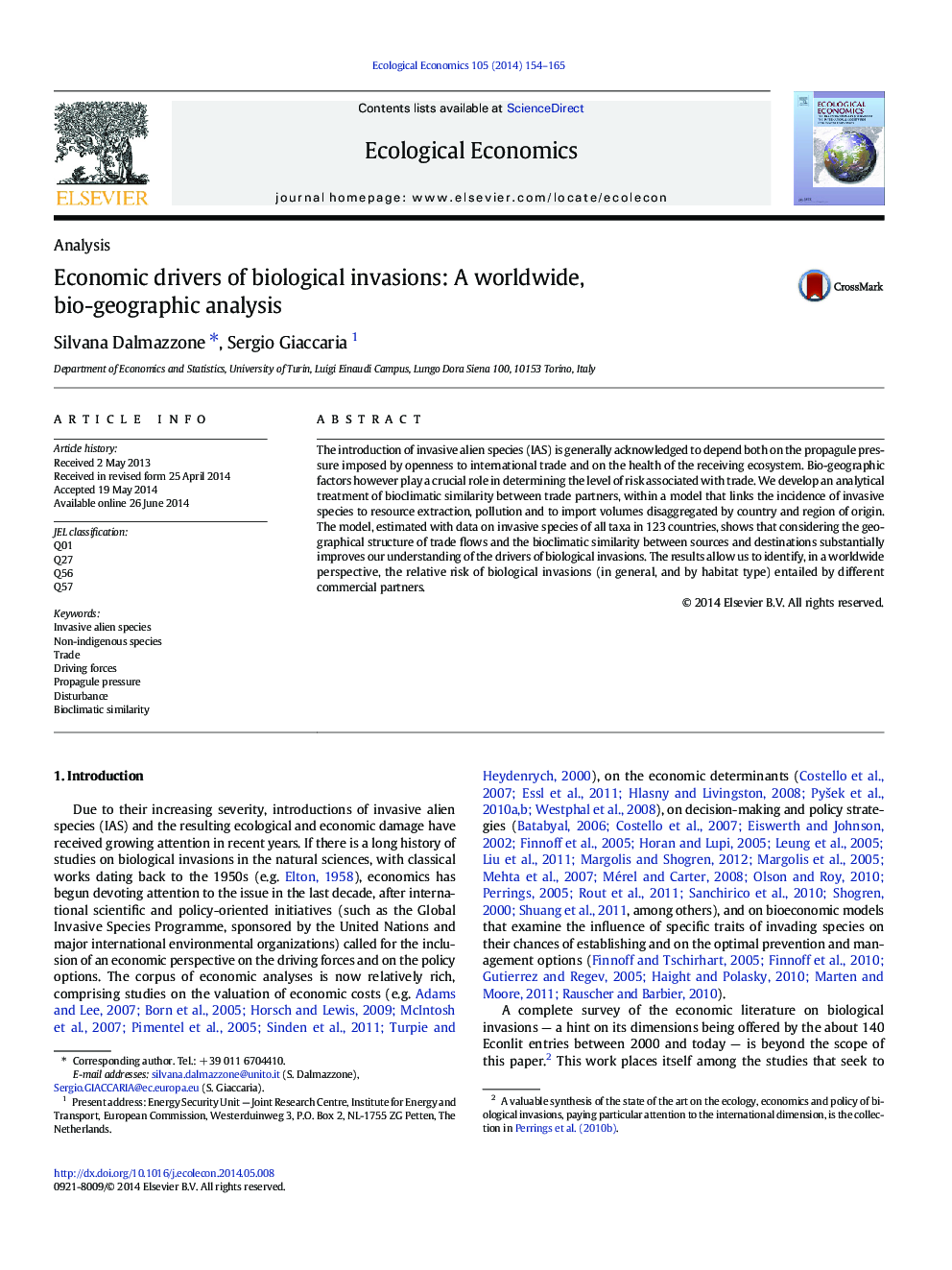| Article ID | Journal | Published Year | Pages | File Type |
|---|---|---|---|---|
| 5049713 | Ecological Economics | 2014 | 12 Pages |
â¢We model biological invasions as a function of trade and anthropic disturbances.â¢Bioclimatic similarity of trade partners determines relative risk of invasion.â¢Insularity, local environmental pressures and distance also increase invasiveness.â¢Region-specific marginal invasion risks are estimated, by habitat type.
The introduction of invasive alien species (IAS) is generally acknowledged to depend both on the propagule pressure imposed by openness to international trade and on the health of the receiving ecosystem. Bio-geographic factors however play a crucial role in determining the level of risk associated with trade. We develop an analytical treatment of bioclimatic similarity between trade partners, within a model that links the incidence of invasive species to resource extraction, pollution and to import volumes disaggregated by country and region of origin. The model, estimated with data on invasive species of all taxa in 123 countries, shows that considering the geographical structure of trade flows and the bioclimatic similarity between sources and destinations substantially improves our understanding of the drivers of biological invasions. The results allow us to identify, in a worldwide perspective, the relative risk of biological invasions (in general, and by habitat type) entailed by different commercial partners.
